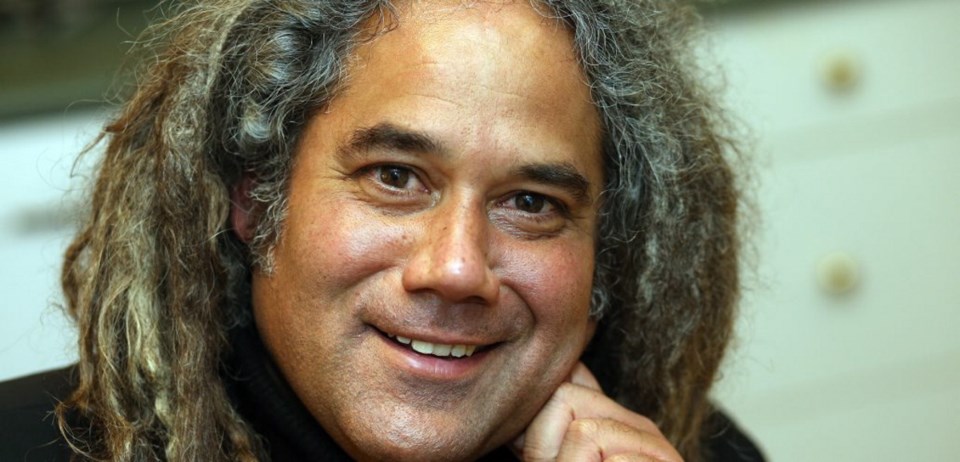The character home’s floorboards creak under the weight of young men anxious for dinner. A pot of spaghetti steams up the windows and a table is set with candles, salad, flaxseed garlic toast and fruit juice. The boisterous dash for grub stills to a hush as Daniel Gwilliam segues from his upcoming 23rd birthday plans to share a personal story.
“I was born in Russia in 1990. Adopted from a place called Kaliningrad — that’s all I know,” he says. “I guess I was about two when I came to Canada. But it was a bad situation with my adoptive parents, abusive stuff. So I got kicked outta there when I was around four and went to a bunch of foster homes after that.”
Gwilliam and the other young men around the table either live or have lived at Mitchell House — a home for youth run by the Threshold Society in Oak Bay. The charity also operates a home for girls and the Safe Housing for Youth (SHY) semi-independent program. Most of the residents, age 16 to 21, are about to or have “aged out” of foster care — moved along by foster families who can’t support them without funding or in need of semi-independent living, where they are on their own but have some support.
With the government serving as parents, foster kids are highly monitored, but what happens to them as adults is of equal concern, advocates say.
“I see the incredible cost in lives of people who have to face this isolation once they age out of care,” says Mary Ellen Turpel-Lafond, Representative for Children and Youth in B.C. She would like to see foster care extended to the age of 21. She has also lobbied the private sector and community agencies to support foster kids. In August, Vancouver Island University decided to waive tuition for kids in care and Turpel-Lafond says others will follow.
“This is about supporting young people to become successful adults,” she says. “It’s an opportunity to disrupt a pathway and see a different route.”
According to the Ministry of Children and Family Development, fewer than 50 per cent of youth in care complete high school within six years of entering Grade 8. In 2012-13, 48 per cent of kids who aged out of care accessed income assistance within six months. About two-thirds of them qualified for disability support.
A profile of B.C. youth in custody by the McCreary Centre Society this year showed 65 per cent of incarcerated youth lived in foster care, a group home or on their own.
There are 612 foster kids in Victoria and 22 are youth living independently.
“It’s not housing, it’s a home. At least we try to make it feel like that,” says Peggy English, a life coach who visits Mitchell House weekly to cook dinner and lead evening art projects and discussions.
The home has one full-time staff person, Graham Kelly, who lives upstairs and thinks of himself as more of a big brother than a parent figure.
“When the house is running well the guys are pretty independent,” he says. They cook, clean and shop for themselves. Kelly helps out and stocks a “free” cupboard of donated food — which some rely on. He’s always free to talk and tries to make occasions like birthdays and Christmas special.
“A few years ago, there were two guys here Christmas morning. I took them for a drive and we got coffee. Later, one said that was so meaningful to him — to have something to do Christmas morning,” Graham says.
“Adapting for me is no problem. I got used to that moving so much,” says Matthew Shaw, 21, who was in foster care since the age of nine. He came to Mitchell House when his most recent foster family moved to Ecuador. He’s now in the transition program, looking for work. His dream is to be a photographer.
“I’m kind of just living to get by,” he says.
“I wish I could afford a camera or a tripod. With the cost of living in Victoria, you have to be rich for those things.”
Resident Ken Hillaire, 19, slips in with his girlfriend after his shift at Jubilee Pharmacy. English notes the health food store environment is turning him into a budding cook.
“He made quinoa and butter chicken,” his girlfriend says proudly.
Colt Love, 19, is a little restless, getting ready to move into the SHY program and his own place. Love was in half a dozen foster homes from the age of six before spending a year at the Pandora Youth Apartments and then Mitchell House.
“I get that it’s hard to take care of kids that aren’t your own,” he says.
Gwilliam said his life in foster care is well-documented in a government file somewhere, but he has little of the thread most children grow up with — very few pictures, or anyone to tell him childhood stories.
His adoption papers have blocked out his mother’s name. “Maybe she was a drug addict or just times were tough. Maybe one day, I’ll find out,” he says. His biggest complaint with foster care is the inconsistent relationships — a revolving door of homes and social workers.
“They come to you and think they know you and your situation, but they have no clue what you’ve been through,” Gwilliam says. “Obviously, it would be nice to have been in just one house.”
Gwilliam credits his time at Mitchell House for the stability to become independent. He now rents his own bachelor apartment and works as a window-cleaner.
“I like to come by and see how the house is doing,” he says, adding he plans to travel one day, maybe to Russia, and go to college.
